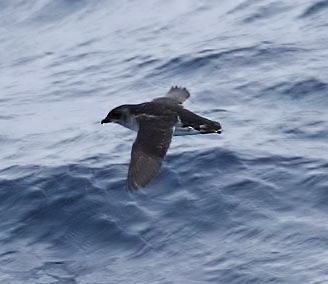 |
| Photo by Mike Danzenbaker (Mike Dazenbaker’s Bird Photography) |
Common name:
South Georgia diving petrel (en); petrel-mergulhador-da-Geórgia-do-Sul (pt); puffinure de Géorgie du Sud (fr); potoyunco geórgico (es); breitschnabel-lummensturmvogel (de)
Taxonomy:
Order Procellariiformes
Family Pelecanoididae
Range:
These birds breed in several sub-Antarctic islands, namely South Georgia in the Atlantic, Prince Edward, Crozet, Kerguelen, Heard and McDonald in the Indian Ocean, and Codfish in New Zealand. They mostly forage in the seas surrounding the breeding colonies.
Size:
They are 18-21 cm long and have a wingspan of 30-33 cm. They weigh 90-150 g.
Habitat:
The South Georgia diving petrel breeds in cooled lava or under sand dunes. During the breeding season they forage in coastal waters, while outside the breeding season they forage offshore or in cool pelagic waters.
Diet:
They mostly feed on planktonic crustaceans, particularly krill, but will also feed on some small fish and young cephalopods. Prey are caught either under water in a pursuit-dive or by surface-seizing.
Breeding:
These birds breed in October-February. They nest in a deep burrow with a nest chamber at the end, dug into volcanic ash or sand dunes. There the female lays a single brownish egg. The egg is incubated for 44-52 days and the chick is fed by both parents, fledging 43-60 days after hatching.
Conservation:
IUCN status – LC (Least concern)
This species has a large breeding range and a global population estimated at 15 million individuals. The population is suspected to be in decline owing to predation by invasive species and human disturbance of breeding colonies.







